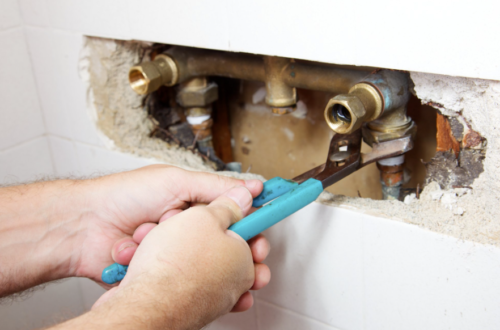Artificial grass is a landscaping solution that has been gaining popularity for many years.
Many homeowners across the UK utilise artificial grass, also known as fake or synthetic turf, in their gardens and outdoor spaces.
A great landscaping solution due to their low maintenance and wonderful aesthetics, if you’re considering installing the product you may be wondering ‘how do you lay artificial grass on soil?’
Well, in this article we’ll be outlining exactly that, providing you with tips and guidance on laying fake turf on soil, as well as explaining the advantages it can bring.

Benefits of Artificial Grass
Laying artificial grass on soil is a popular choice for many people who have a garden or outdoor space at their home. While the process can be fairly straightforward when conducted correctly, it’s important to make sure that it’s the right choice for you and your property.
To make sure that fake turf is the right option for you, let’s look at some of the great benefits they can bring.
These include:
Low maintenance
Undoubtedly the main advantage of having artificial grass installed is that it is an extremely low-maintenance solution. If you’re someone who doesn’t enjoy gardening tasks or simply doesn’t have the time to do them, artificial grass is a great option for you.
This is because, unlike natural turf, the synthetic alternative requires no mowing, pruning or much lawn care at all. A simple wash with a hose every now and again is typically all that is required.
Conserves water
Artificial grass does not need to be watered like natural grass and will still maintain its luscious green look. As well as being good for the environment by saving water, it can have other benefits. For instance, occasionally in the summer months hose pipe bans and other restrictions may be in force in certain parts of the UK. If this is the case for your region, you won’t have to worry about your lawn suffering as a result of a lack of water.
Eco-friendly
Going hand in hand with the water conservation we mentioned in the point above, artificial grass is also extremely environmentally friendly. It’s considered to be a better option for the environment than some other synthetic products, as there is a reduced reliance on lawn maintenance equipment like mowers and trimmers which can emit greenhouse gases.
Can be used in all weather
Natural grass goes through a number of phases during the year, and requires a great deal of care to ensure it remains healthy during extreme heat and freezing temperatures. However, this is not the case for fake turf. It is able to withstand all types of weather conditions including heavy rainfall.
It won’t become muddy or boggy following a storm or lose its green appearance during months of harsh sun.
Robust and durable
If you want your lawn to be able to withstand heavy footfall and regular use, then artificial grass is the way to go. It offers unrivalled durability that in some cases is specifically designed to cope with large footfall and wear and tear.
This particularly makes it a great choice for sporting pitches that frequently see football, rugby and much more played on them. This also means they provide wonderful longevity that always makes them a worthwhile investment.
Looks great
It isn’t just practical benefits that make artificial grass a great choice for an outdoor space. It also looks fantastic. Fake grass offers a lush, green appearance to your lawn and landscaping efforts that can make your garden the envy of friends, family and neighbours. And the best thing is that the grass will keep this vibrant appearance without the need for constant upkeep and lawn care.
Reduced allergies
If you’re someone who finds themselves constantly battling allergies at certain times of the year, then artificial grass can help you combat this. Unlike traditional grass, synthetic turf does not contain any natural elements that will produce pollen and other allergies. So, you can put away the hayfever tablets and enjoy your outdoor space in the knowledge that you can have a comfortable and relaxing experience.
Weed resistant
Unlike natural grass where weeds can organically grow, this isn’t a problem with fake turf. Typically, a weed membrane will be installed under the layer of artificial grass making it hard for weeds to grow. Therefore, there will be no need to use herbicides and weed-killing products – reducing the usage of chemicals in your garden.
Suitable for pets and children
There are a whole host of different artificial grass products available on the market, including some blends that are specifically formulated to be child and pet-friendly. This includes options that feature shock absorbers to cushion any falls, as well as odour-resistant turf that will remove any unpleasant smells if your furry friends use the grass as a toilet.
Now you know the various advantages of artificial grass, let’s look at how you can install it on soil.
Can you lay artificial grass directly on soil?
Technically, yes, you can lay artificial grass directly on top of soil in your garden or outdoor space. In fact, you could even lay it on top of existing natural grass.
However, both of these methods are not recommended.
This is because the appearance of the grass will be left looking uneven and make it easier to become damaged. Furthermore, the grass underneath the new fake turf will likely continue to grow, leaving you with a natural/artificial grass hybrid that will be downright unpleasant to look at.
Instead, you should use a sub-base between the soil and the artificial grass that will provide a good foundation for the new turf to sit on top of. This is the best way to ensure you’re left with a practical and attractive-looking synthetic lawn.
Below, we’ll outline the various steps you should take when laying artificial grass on soil.
How to lay artificial grass on soil
If you’re wondering how to lay artificial grass on soil, you’ve come to the right place. In most cases, the process is straightforward when following the right steps, and can be conducted by most competent DIYers. However, should you need additional advice or find yourself getting into difficulty during the process, don’t hesitate to call in professional support.
Prepare your surface
The first thing you need to do when laying artificial grass on soil is to prepare the surface that the grass is going to lay upon.
If you have an existing lawn, cut it all the way down until you’re simply left with the soil underlayer. Then, take some time removing any weeds, plants or debris. Next, remove any topsoil so you have enough room for the sub-base, around three-four inches should suffice. Then, level out the soil so it provides as smooth a surface as possible.
If you have a very large garden, you might want to call in a professional landscaper to assist with this step to save time.
Add the sub-base
Now it’s time to add your sub-base.
There are various types you can use for this with the most popular options including sand and granite/concrete. Take some time to research the different options available and consider what would be the best for you.
Lay the sub-base over the soil and even it out with a shovel.
Install your weed membrane
As mentioned above, artificial grass is great at stopping weeds from growing. This is because a weed membrane is in place that does not allow weeds to cut through and grow in the turf. The membrane can be laid either above or below the sub-base, so feel free to do this step before applying the sub-base if you think it’s more suitable.
Lay it across the ground, making sure to overlap the joints by around 100mm. Secure the membrane to your garden’s edging.
Lay your artificial grass
Now it’s time for the all-important step – actually laying your artificial grass. Cut your grass to size based on how big or small your garden is. Then, lay the grass on top of the weed membrane, taking care to ensure the grass’ fibres are pointing towards your property (this is the most aesthetically pleasing way to lay fake turf).
If you have any excess turf, quickly use your knife to trim the edges, and smooth the grass out.
Join the grass
Now the artificial grass has been installed, it’s time to join the seams.
Line up the pieces of grass where the seams come together, and use glue and joining tape to bring them together. You could also use a small nail if you prefer.
Then, fasten the edges of the grass using pins to keep it in place.
Once you’ve completed all of the above steps, your grass will be ready for you to enjoy!
For more home improvement articles, including tips and guidance regarding making the most of your garden or outdoor space, take a look at the great selection of blogs we have throughout our website.





